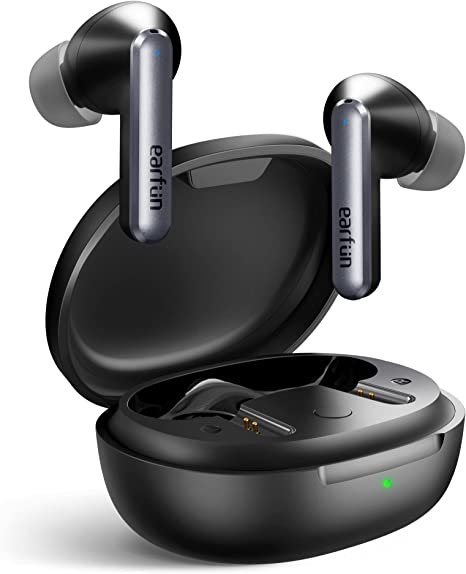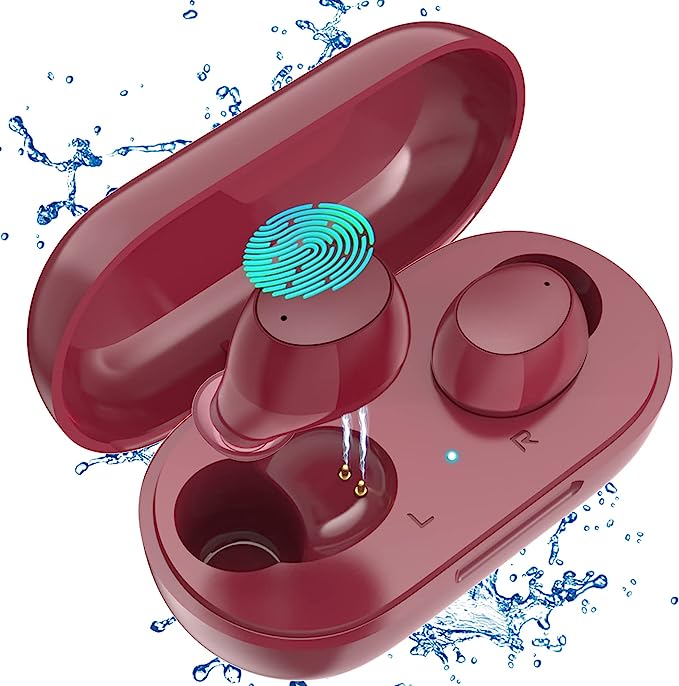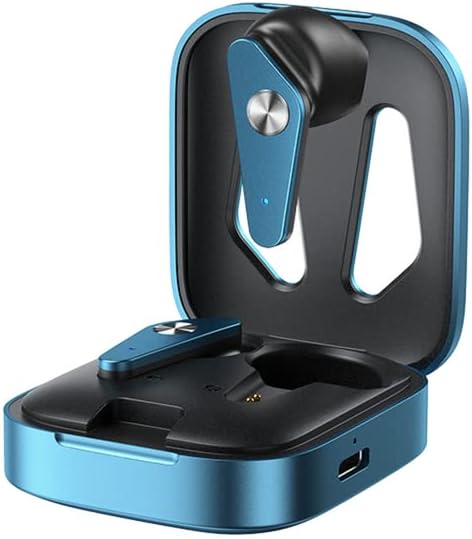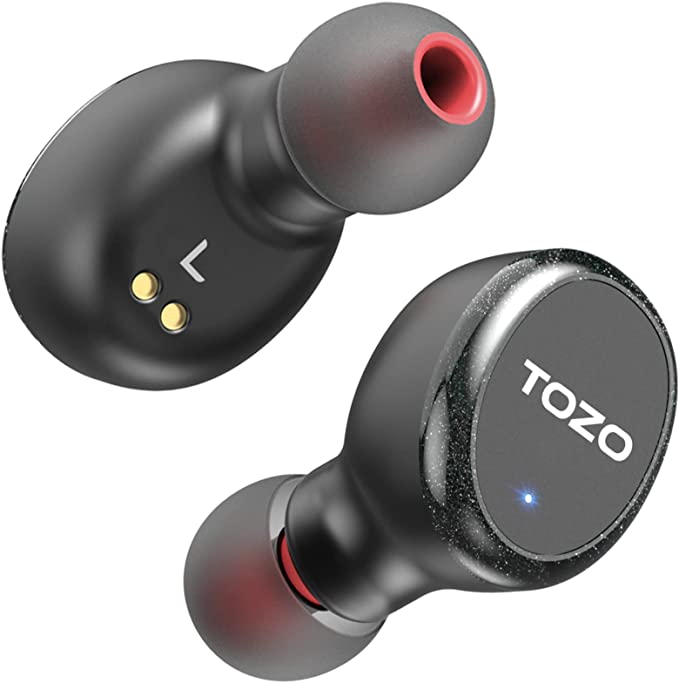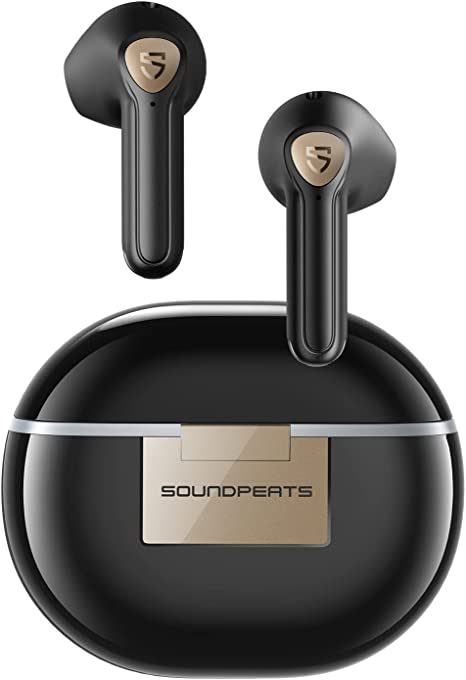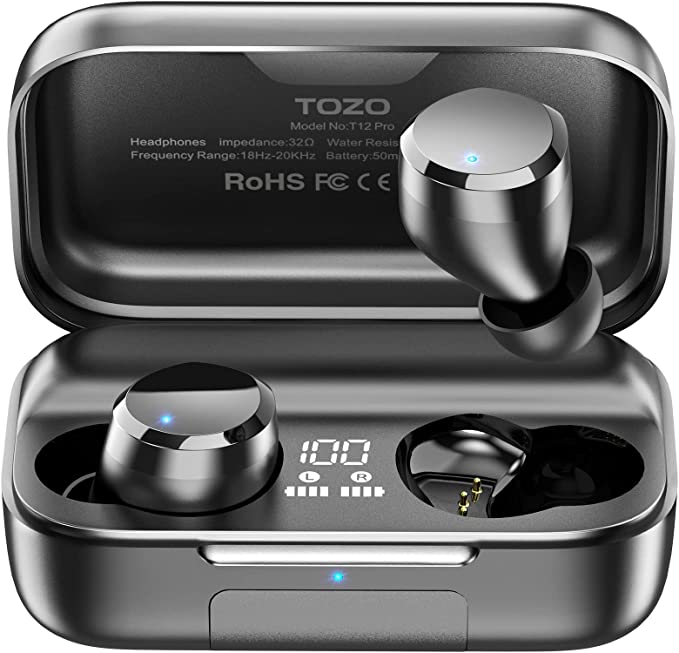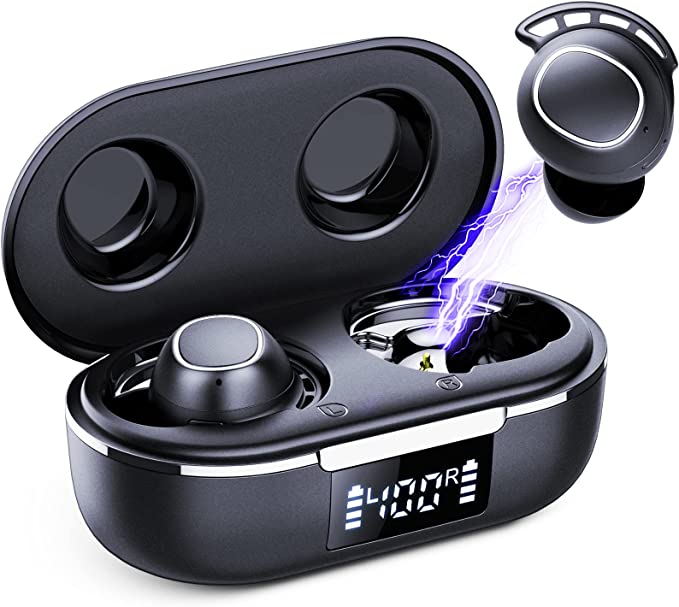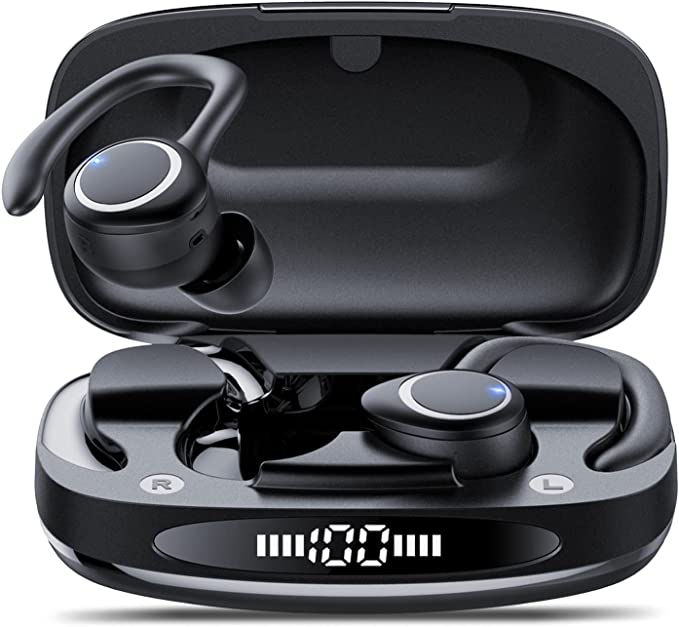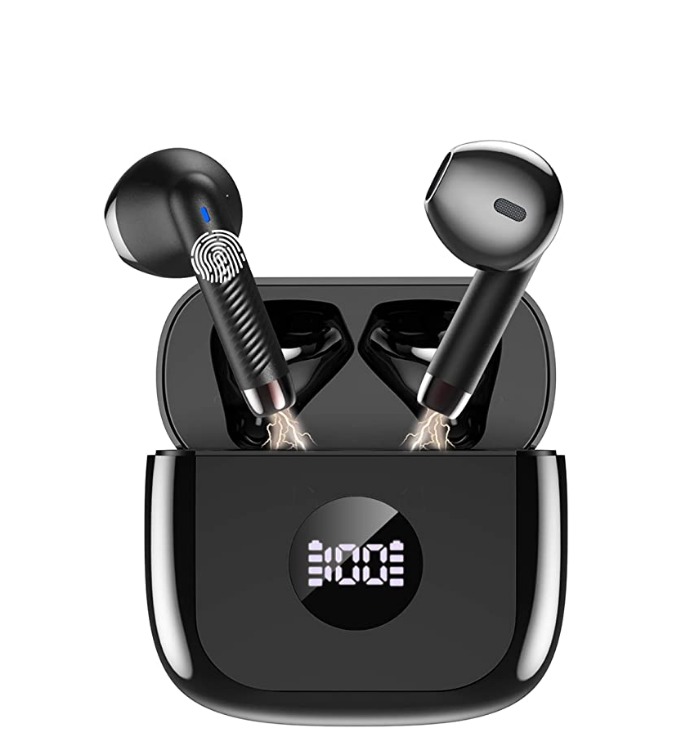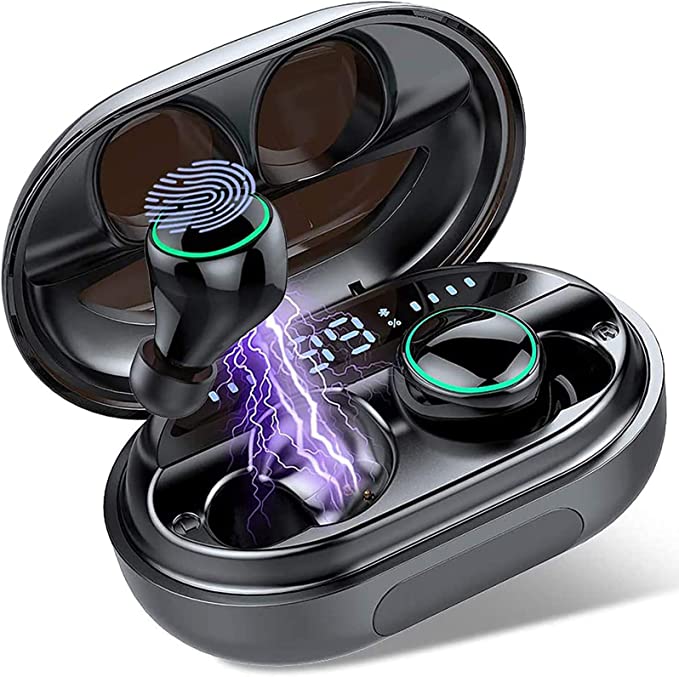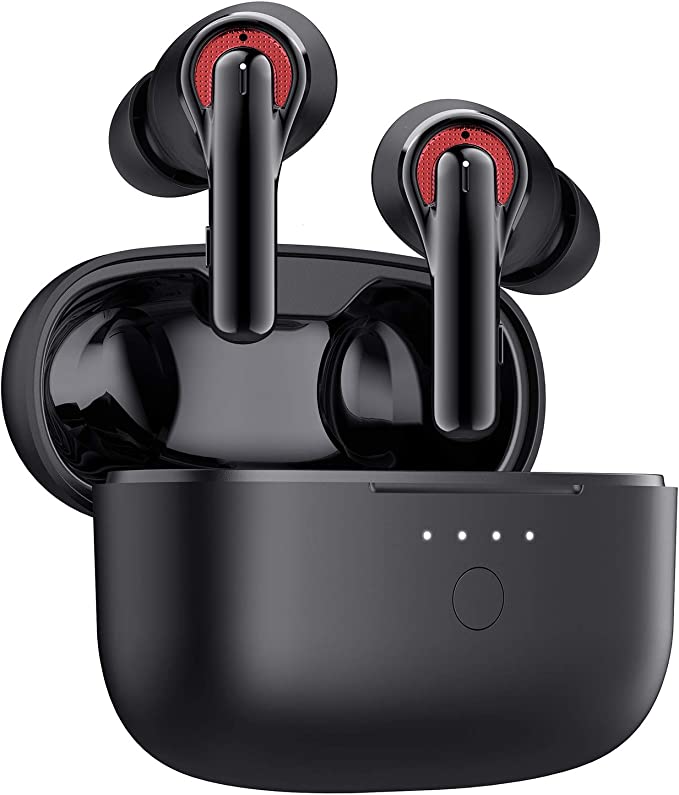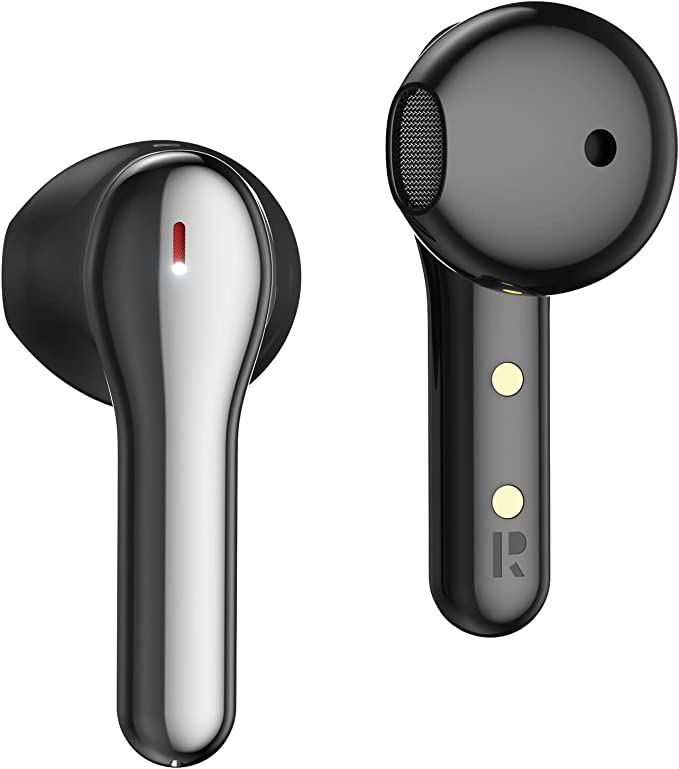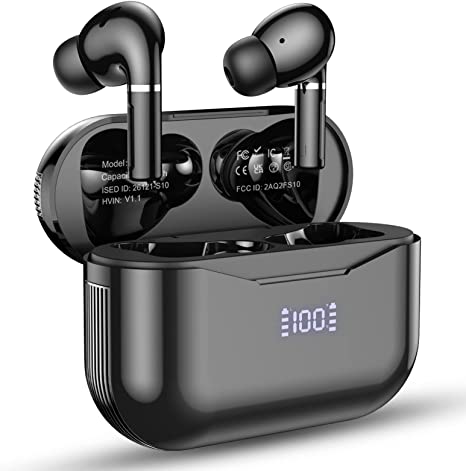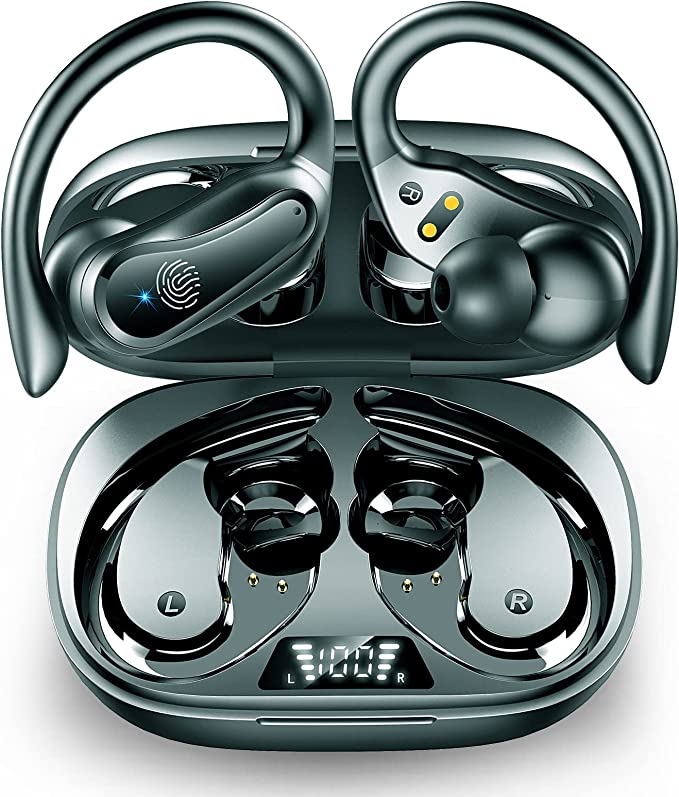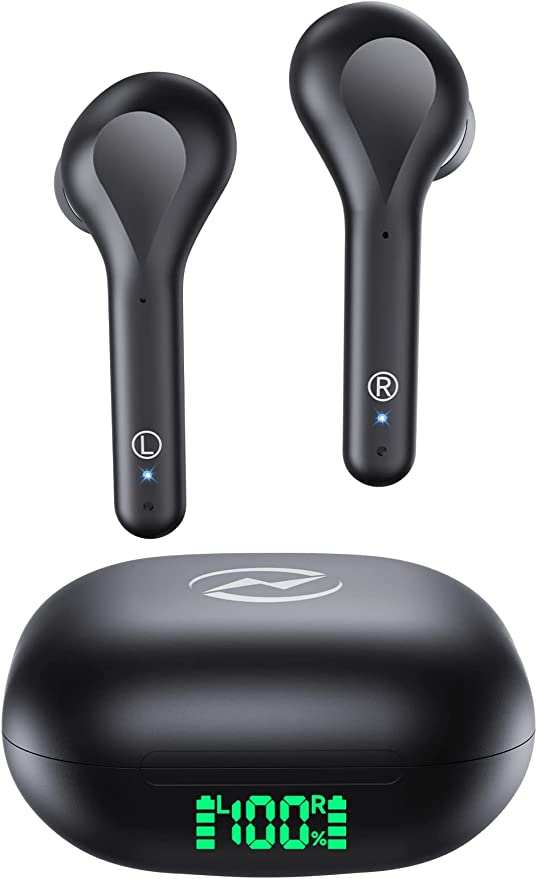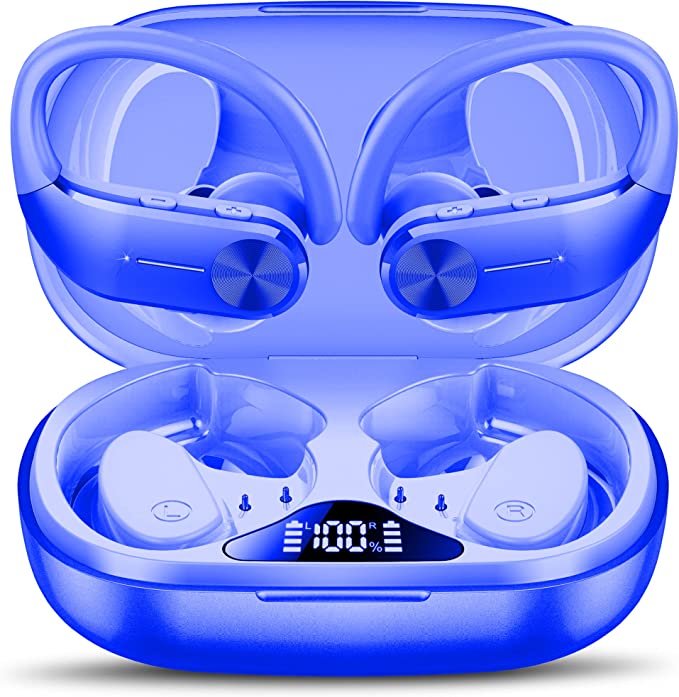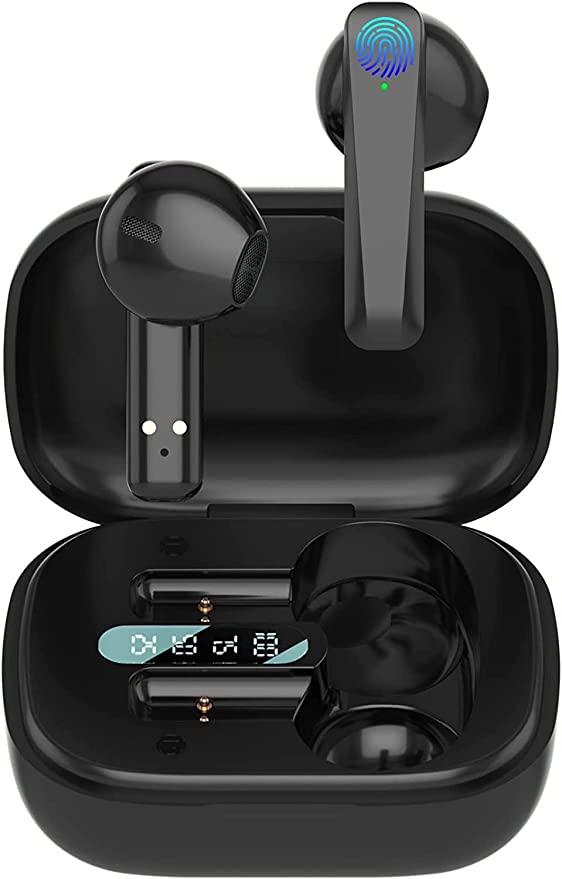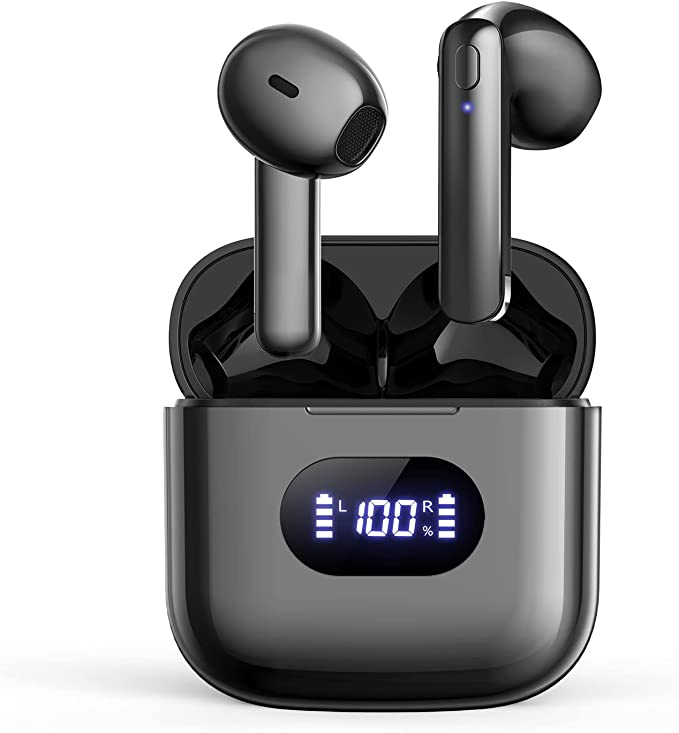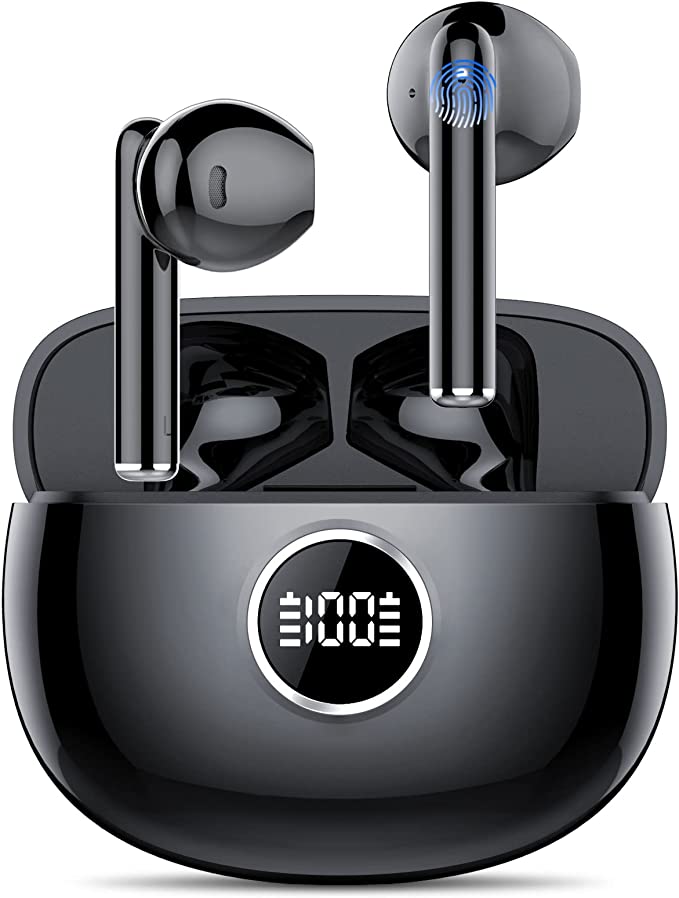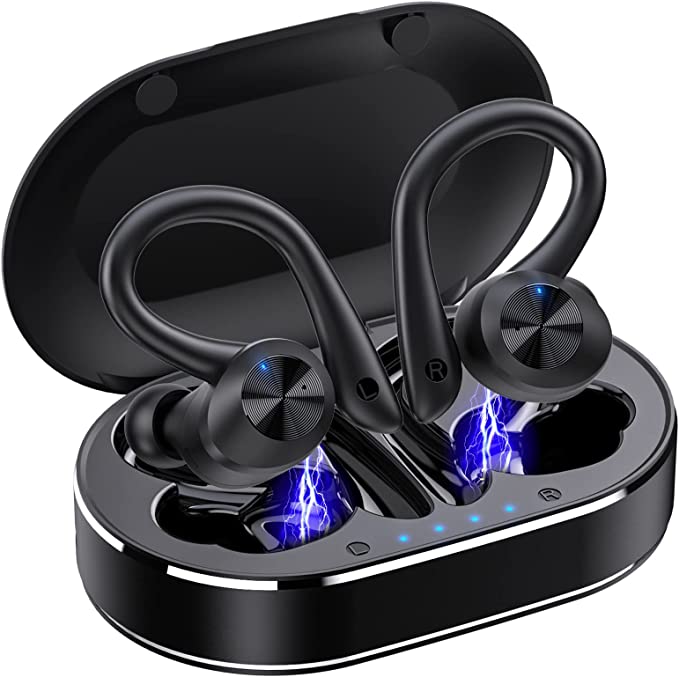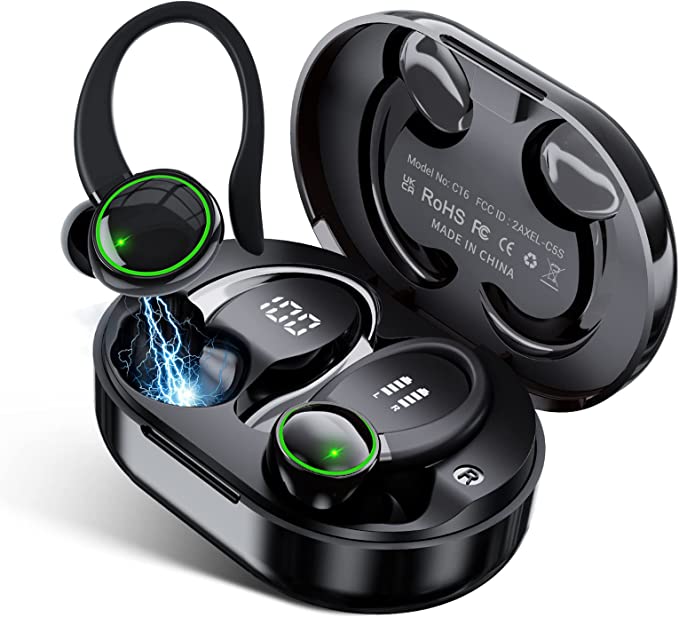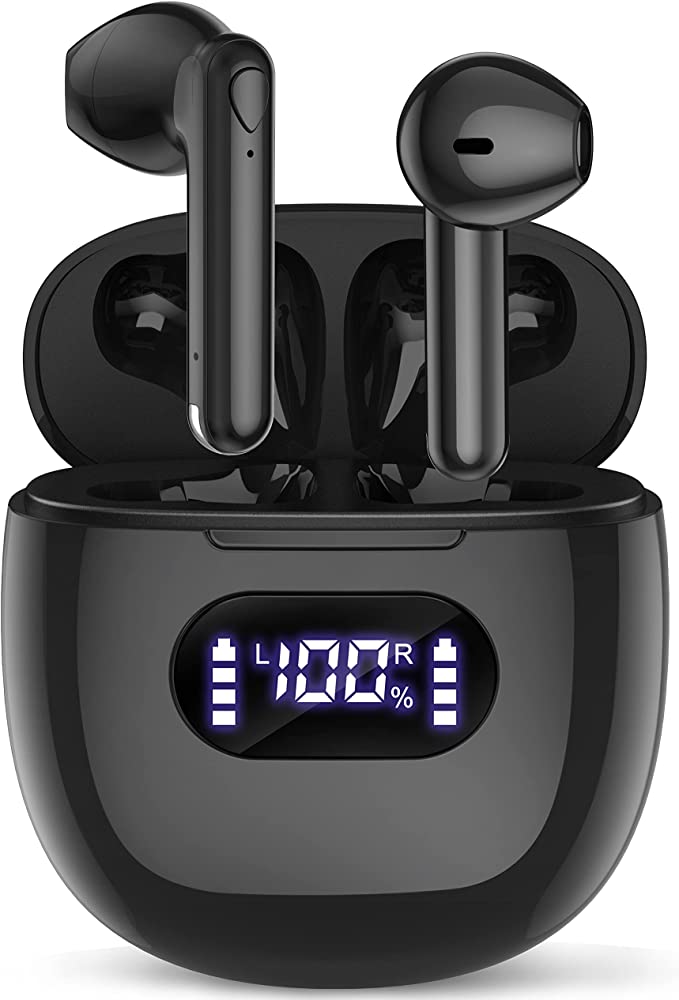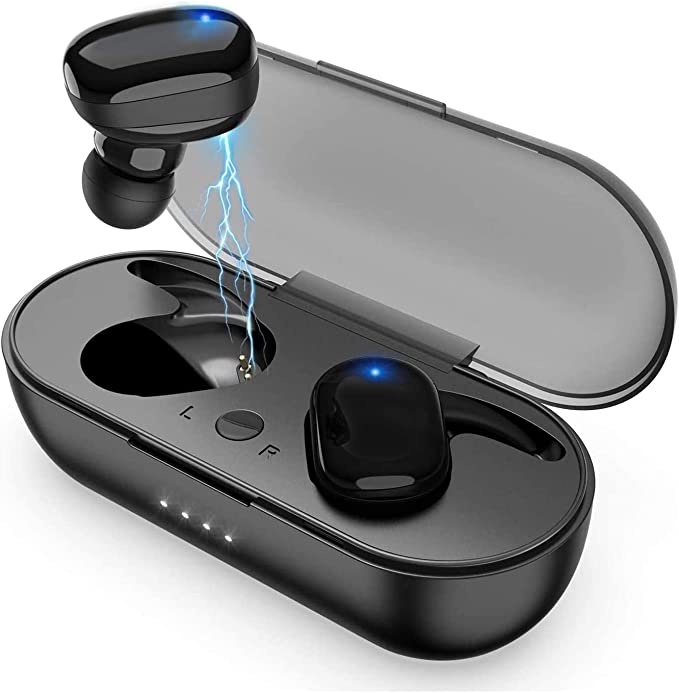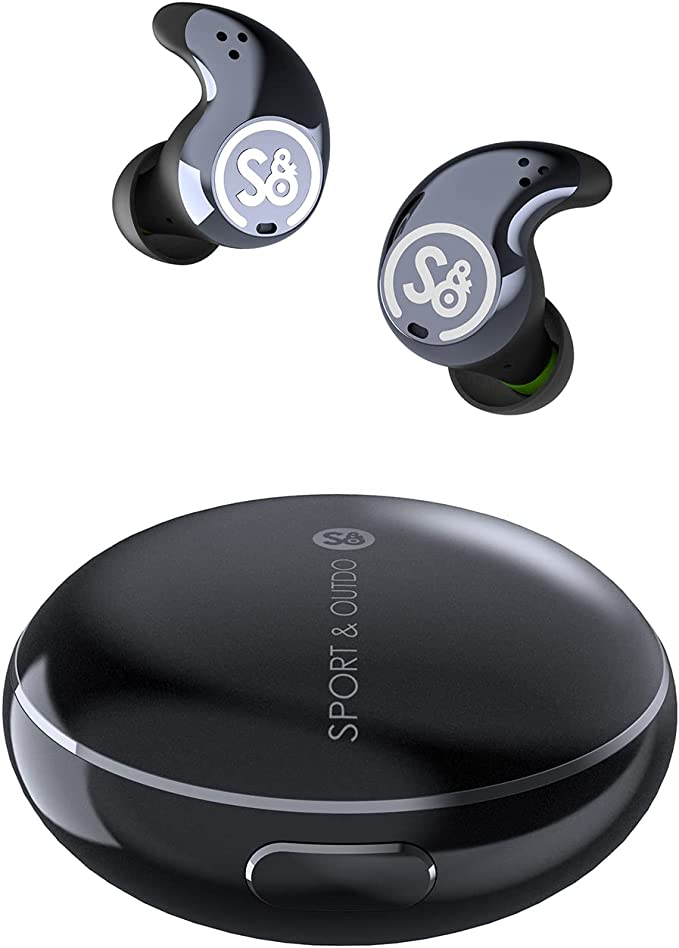EarFun Free 2S Wireless Earbuds: The Science Behind Crystal-Clear Calls, Immersive Sound, and All-Weather Reliability
Update on May 15, 2025, 9:47 a.m.
We live in an era where tiny, almost invisible pieces of technology accompany us everywhere, whispering music, news, and the voices of loved ones directly into our ears. Wireless earbuds have become more than just accessories; they are integral to our daily soundscape, our personal portals to a world of audio. Yet, how often do we pause to consider the sheer concentration of scientific ingenuity nestled within these diminutive devices? Today, I invite you to join me on an exploration, not of a product review, but of the fascinating science and engineering principles that come alive inside a contemporary pair of wireless earbuds, using the EarFun Free 2S as our case study to unravel these unseen marvels.
As an acoustic engineer, I’ve spent decades immersed in the world of sound and the technologies that shape it. It’s a realm where physics, materials science, digital signal processing, and human perception intertwine in the most intricate ways. Let’s peel back the layers.

The Quest for Clarity: Untangling Your Voice with Qualcomm® CVC™ 8.0 ENC
One of the most persistent challenges in our hyper-connected world is ensuring our voice cuts through the noise. Whether you’re navigating a bustling city avenue, working from a lively coffee shop, or trying to coordinate with family amidst the happy chaos of home, being heard clearly is paramount. This is where technologies like Qualcomm’s Clear Voice Capture (CVC™) 8.0 with Environmental Noise Cancellation (ENC), as featured in the EarFun Free 2S, step into the acoustic spotlight.
But what does this actually mean for your calls? Imagine you’re speaking into your earbuds. The microphones don’t just capture your voice; they capture everything – the rumble of traffic, the chatter of nearby conversations, the hum of an air conditioner. This amalgamation of sound is where the science of CVC 8.0 ENC begins its work. At its core, this technology is a sophisticated form of digital signal processing. Think of it as having a highly skilled audio engineer miniaturized and placed within your earbuds, whose sole job is to listen intently to the incoming audio stream from the microphones, intelligently distinguish the complex patterns of human speech from the myriad other sounds, and then meticulously filter out that unwanted environmental noise.
The “how” involves complex algorithms – though the precise proprietary details are Qualcomm’s own – that analyze the frequency spectrum and temporal characteristics of the sound. Your voice has certain acoustic signatures; so does wind noise, traffic rumble, or background chatter. These algorithms are trained to identify and significantly reduce those non-speech sounds. It’s not just a blunt filter; it’s an adaptive system. For example, some CVC versions employ techniques like spectral subtraction, where an estimate of the noise spectrum is subtracted from the overall signal, or more advanced statistical models and machine learning principles to achieve even finer discrimination. The history of this technology is a fascinating journey, evolving from relatively simple noise gates to today’s incredibly nuanced AI-driven solutions that can even differentiate between multiple voices.
In Your Life, this translates to a tangible benefit: your voice is the primary focus of the call. Picture yourself walking down a windy street, trying to finalize important plans. With effective CVC 8.0 ENC, the person on the other end hears your words, crisp and clear, rather than a frustrating battle between your voice and the gusting wind. It’s the science of selective hearing, engineered for effortless communication.

The Invisible Thread: Weaving Connections with Bluetooth 5.2
The “wireless” in wireless earbuds is a freedom we now largely take for granted, a liberation from the tyranny of tangled cords. This liberty is predominantly delivered by Bluetooth technology, and the EarFun Free 2S utilizes version 5.2. The journey of Bluetooth itself is a rather charming piece of tech history, named after the 10th-century Danish king Harald “Bluetooth” Gormsson, famed for uniting Danish tribes – just as Bluetooth technology was envisioned to unite different devices. Conceived in the 1990s by engineers at Ericsson in Sweden, it has evolved dramatically.
Bluetooth operates in the 2.4 GHz Industrial, Scientific, and Medical (ISM) radio band, the same bustling neighborhood used by Wi-Fi, microwaves, and other devices. To navigate this potentially crowded space and maintain a robust connection, Bluetooth employs a clever technique called Frequency-Hopping Spread Spectrum (FHSS). Imagine your audio data needs to cross a busy highway; instead of sticking to one lane that might get congested, FHSS rapidly switches between dozens of narrow frequency channels (lanes) many times per second, following a pseudo-random sequence known to both the transmitting and receiving devices. This makes the signal resilient to interference.
So, what makes Bluetooth 5.2 a noteworthy upgrade over its predecessors? Each iteration has brought improvements, and 5.2 continues this trend by refining aspects of speed, range, and, crucially for tiny battery-powered devices, power efficiency. While the maximum theoretical range is often quoted, the practical, reliable range for earbuds is more about stable connectivity within your personal space. Bluetooth 5.2 also introduces features that are foundational for future audio advancements, such as support for LE Isochronous Channels, which paves the way for LE Audio. LE Audio promises benefits like improved audio quality at lower bitrates (thanks to the LC3 codec), better power consumption, and enhanced capabilities like Auracast™ broadcast audio. While the EarFun Free 2S product details don’t specify LE Audio feature implementation, the underlying Bluetooth 5.2 chip makes such advancements possible for the broader ecosystem.
In Your Life, Bluetooth 5.2 aims to provide that seamless, “it just works” experience. It’s the science ensuring your music streams without those jarring dropouts as you move around your home, your earbuds connect swiftly when you take them out of the case, and they eke out a bit more listening time before needing a recharge. It’s the invisible, yet vital, thread connecting you to your sound.

The Soul of the Sound: Decoding aptX™ and the Pursuit of “Deep Bass”
For many, the ultimate measure of any audio device is the quality of the sound it produces. When it comes to wireless audio, the journey from your phone or laptop to your ears involves a critical step: audio compression and decompression, managed by a “codec.” The EarFun Free 2S highlights Qualcomm® aptX™ technology and “Deep Bass,” so let’s delve into what these mean for your listening pleasure.
First, aptX™. Think of an audio codec as a specialized courier service for your digital music. To travel efficiently over the limited bandwidth of Bluetooth, your audio files, often large and detailed, need to be temporarily “packed” (compressed) and then “unpacked” (decompressed) at the earbud end. The standard, mandatory codec for all Bluetooth audio devices is SBC (Subband Codec). While functional, SBC’s compression can sometimes be quite “lossy,” meaning some of the original audio detail might be discarded to save space, which can lead to a sound that some listeners perceive as less clear or “muddy.”
Qualcomm’s aptX codec, which has a rich history dating back to research in the 1980s by Dr. Stephen Smyth, was designed specifically to address this. It uses a different, more efficient compression algorithm (based on time-domain ADPCM, or Adaptive Differential Pulse-Code Modulation) that aims to preserve more of the original audio data. The goal is to deliver “CD-like” quality (typically referring to 16-bit/44.1kHz resolution) over a Bluetooth connection. It’s about striking a better balance between compression efficiency and sonic fidelity, ensuring that more of the subtle nuances, the sparkle in the high frequencies, and the richness in the midrange make it to your ears. It’s like comparing a quick, functional sketch (SBC) to a more detailed and faithful artistic reproduction (aptX).
Now, what about “Deep Bass”? This is where the science gets particularly multifaceted. While a good codec like aptX ensures a clean signal is delivered to the earbuds, the actual perception of “deep bass” is a result of a symphony of factors:
- The Driver (Transducer): This is the tiny speaker inside each earbud, typically a dynamic driver. Its design is paramount. The diaphragm (the membrane that vibrates to create sound) needs to be able to move a sufficient amount of air (excursion) to produce low frequencies effectively. The material of the diaphragm (e.g., PEEK, PET, or more exotic composites), the strength of the magnet, and the design of the voice coil all play crucial roles.
- Acoustic Enclosure and Seal: The housing of the earbud itself acts as an acoustic chamber. Its volume, shape, and how well the eartip seals in your ear canal are critical. A good seal prevents bass frequencies from “leaking” out and also helps to isolate you from external noise, making the bass you do hear more prominent. This is why eartip selection is so important.
- Digital Signal Processing (DSP): Modern earbuds often employ sophisticated DSP. This can be used to equalize the sound, actively boosting certain bass frequencies or compensating for the natural acoustic limitations of a small driver and enclosure. This is where the “tuning” of the earbuds happens.
So, when the EarFun Free 2S mentions “aptX™ Deep Bass,” it implies that the combination of the high-quality aptX signal path and the careful engineering of its drivers, acoustics, and possibly internal DSP tuning, all work together to deliver a satisfying low-end response. In Your Life, this means feeling the resonant thump of a kick drum, the rich growl of a bass guitar, or the impactful rumble in a movie soundtrack, making your listening experience more visceral and engaging.

Braving the Elements: The Engineering of Sweatshield™ IPX7 Waterproofing
Life is rarely confined to a perfectly dry, climate-controlled room. Workouts generate sweat, commutes can be unexpectedly rainy, and accidents happen. For delicate electronics like wireless earbuds, moisture has traditionally been a significant threat. The EarFun Free 2S addresses this with its “Sweatshield™ IPX7 Waterproof” rating.
Let’s first decode “IPX7.” This is a standardized rating defined by the International Electrotechnical Commission (IEC) in their standard 60529. The “IP” stands for Ingress Protection. The first digit (replaced by ‘X’ here) refers to protection against solid particles (like dust); an ‘X’ means it hasn’t been specifically rated for that, or the manufacturer chose not to highlight it. The second digit, ‘7’ in this case, is the crucial one for water resistance. An IPX7 rating signifies that the device is protected against the effects of temporary immersion in water under standardized conditions: up to 1 meter of submersion for up to 30 minutes.
Achieving this level of protection in such a compact device is a feat of materials science and precision mechanical engineering. It typically involves several strategies:
- Hydrophobic Coatings: Internal components, especially the delicate circuit board, might be treated with a microscopic, water-repellent nano-coating.
- Precision Seals: Openings such as the charging port (if exposed, though many wireless earbuds now charge in a case), seams where casing parts join, and around microphone and driver outlets, must be meticulously sealed, often using custom-designed rubber O-rings or gaskets.
- Robust Casing Construction: The outer shell itself must be designed to prevent water ingress, possibly using ultrasonic welding for a seamless bond between plastic parts.
The term “Sweatshield™” is EarFun’s proprietary branding for their implementation of this IPX7 standard. While the specific additional measures or material choices that constitute “Sweatshield” aren’t publicly detailed beyond the IPX7 achievement, it underscores a deliberate engineering focus on ensuring the earbuds can withstand the corrosive effects of sweat (which can be more aggressive than plain water due to salts and acidity) and moisture encountered in active use. Think of it as equipping your earbuds with a custom-fitted, high-performance miniature wetsuit, designed to keep the sensitive electronics safe and dry.
In Your Life, an IPX7 rating means peace of mind. It means you can push through that grueling gym session, get caught in an unexpected shower on your run, or even accidentally drop an earbud in a puddle (briefly!) without immediately fearing for its demise. It’s about building technology that adapts to the often-unpredictable realities of an active lifestyle.

The Competitive Edge: Unpacking “Game Mode” and the Battle Against Latency
For anyone who enjoys mobile gaming or watching videos on the go, there’s a particular frustration that can shatter immersion: audio latency. This is the noticeable delay between an event happening on screen and the corresponding sound reaching your ears. Seeing a character’s lips move before you hear their words, or the sound of an in-game explosion arriving a moment too late, can be incredibly jarring. The “Game Mode” feature on the EarFun Free 2S is designed to combat this very issue.
Understanding latency in wireless audio requires appreciating the journey sound takes. When your phone or computer sends audio to your earbuds, it’s not an instantaneous teleportation. The audio signal must be:
- Encoded: Compressed by the audio codec (like aptX or SBC).
- Packetized & Transmitted: Broken into data packets and sent over the Bluetooth radio waves.
- Received & Buffered: Picked up by the earbuds and temporarily stored in a small memory buffer.
- Decoded & Converted: Unpacked by the codec and converted back into an analog audio signal.
- Played: Sent to the drivers to produce sound.
Each of these steps, however quick, introduces a tiny delay. When these delays accumulate, you get noticeable latency. Standard Bluetooth audio transmission often prioritizes connection stability and audio quality, which can sometimes mean slightly larger buffers or more thorough encoding/decoding processes, contributing to a latency that might be acceptable for music listening but problematic for time-sensitive video or gaming.
“Game Mode” is essentially an instruction to the earbud’s chipset and firmware to re-prioritize. While the exact mechanisms are often proprietary to the chipset manufacturer and earbud designer, it generally involves one or more of the following:
- Codec Optimization: If the earbuds support a low-latency variant of a codec (like aptX Low Latency or aptX Adaptive in its low-latency mode), Game Mode would likely switch to that profile. These profiles are designed for speed, sometimes at a very slight, often imperceptible, trade-off in maximum audio fidelity or error resilience.
- Reduced Buffer Sizes: The internal audio buffers in the earbuds might be made smaller. Less buffering means quicker throughput, but it can also make the connection slightly more susceptible to dropouts if the radio environment is very noisy.
- Streamlined Data Processing: Other non-essential audio processing might be minimized or bypassed to speed up the pipeline.
Think of it as switching your audio data from a scenic, leisurely route to an express highway. The journey might be less about taking in every single nuance with maximum error correction and more about getting to the destination (your ears) as quickly as possible. In Your Life, this means that the satisfying thwack of a virtual tennis ball, the crucial sound of approaching footsteps in a competitive shooter, or the dialogue in your favorite streaming show aligns much more closely with the on-screen action, keeping you fully immersed and, in gaming, potentially giving you that split-second advantage.

The Conductor’s Baton: The Role of the Companion APP
While much of the magic happens within the hardware and firmware of the earbuds themselves, the companion “APP” mentioned for the EarFun Free 2S acts as the user’s interface to some of this underlying technology – like a conductor’s baton guiding an orchestra. Typically, such apps allow for:
- Sound Customization: Often, this means an equalizer (EQ). The science here is frequency manipulation – allowing you to boost or cut specific frequency bands (bass, midrange, treble) to tailor the sound profile to your personal preference or the type of audio you’re listening to.
- Control Remapping: The ability to change what tapping or holding the earbud buttons does. This is a software-to-firmware interaction.
- Firmware Updates: This is crucial. Firmware is the embedded software that controls the earbud’s hardware. Updates delivered via the app can improve performance, fix bugs, enhance compatibility, or even add new features or codec support over the lifespan of the earbuds. It’s the science of keeping your technology adaptable and optimized.
In Your Life, the app empowers you to become an active participant in shaping your audio experience and maintaining the health and functionality of your earbuds, ensuring they continue to serve you well.

Conclusion: The Invisible Marvels We Carry
Our journey inside the EarFun Free 2S, and by extension, inside the world of modern wireless audio, reveals a breathtaking concert of technologies. From the intelligent algorithms that sculpt voice clarity out of ambient chaos with CVC 8.0 ENC, to the steadfast radio waves of Bluetooth 5.2 knitting together our wireless world; from the fidelity-focused compression of aptX striving to deliver every musical nuance, to the material resilience of IPX7 waterproofing that defies the elements; and from the latency-slashing speed of Game Mode to the customizing power of a companion app – it’s clear that these small devices are giants of engineering.

The next time you slip in your wireless earbuds, perhaps you’ll pause for a moment to appreciate this invisible symphony of science. It’s a testament to human ingenuity, our relentless pursuit of better ways to communicate, to be entertained, and to connect with our world, one meticulously engineered sound wave, one robust radio signal, and one precisely sealed casing at a time. And that, in itself, is a sound worth listening to.
